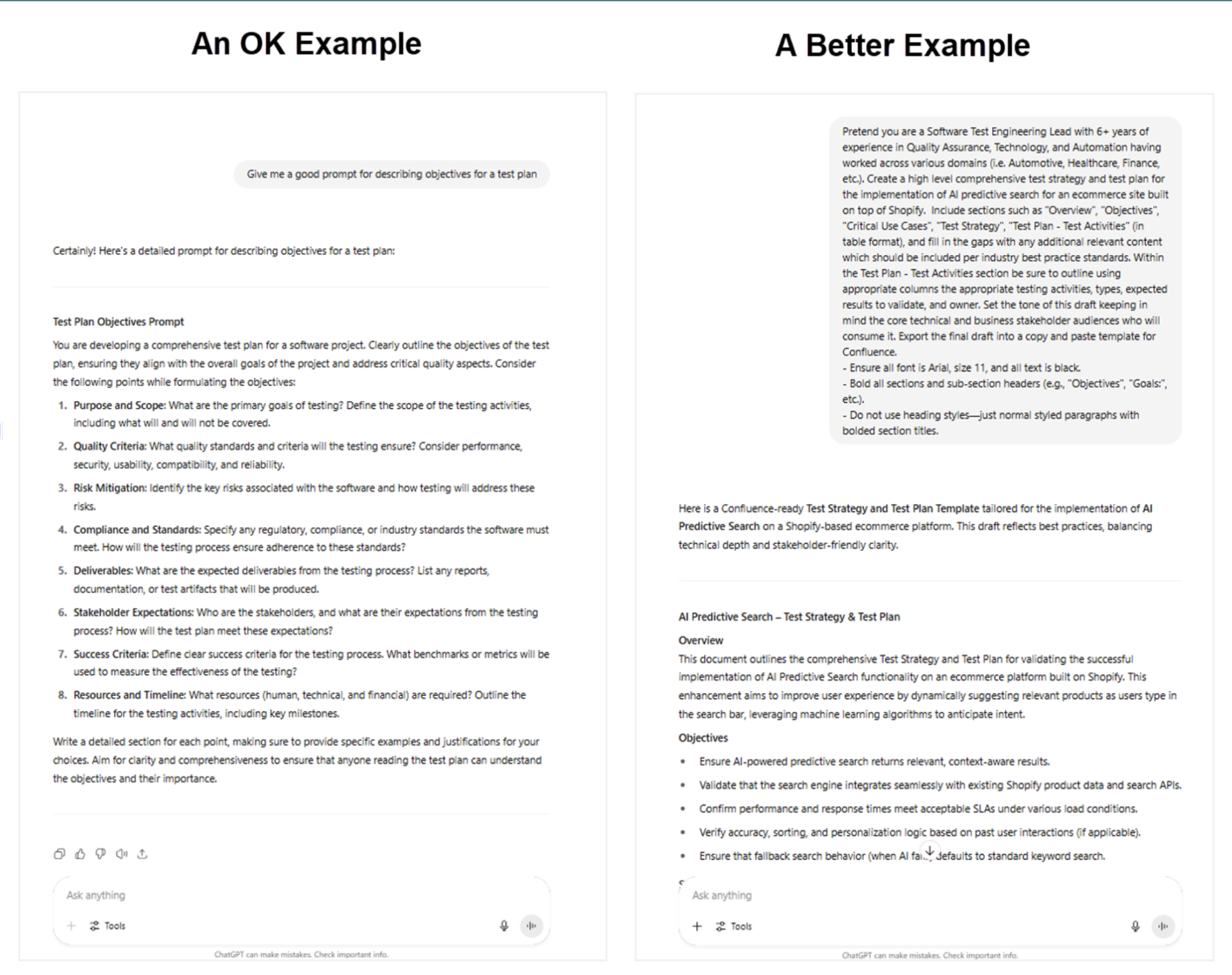Brittany Turner
Director of Development Operations
From Neural Mapping to GenAI Gold
Prompt Engineering Best Practices for Optimal Output

Prompt Engineering is the process of crafting specific and effective instructions—also known as prompts—to guide generative AI models in producing desired outputs through its capabilities learned during pretraining. Prompts serve as a direct interface between our human intentions and the AI’s digital brain mapping to frame a fast response. It’s no different than how our human brains function 90% of the time. To highlight this, let’s refer to neuroscience and how our brain works. Ellen Leanse’s “The Happiness Hack” sums it up best:
- “The brain processes massive amounts of information from emotions, the senses, prior learning, and much more as it directs what to do next.”
- “Most of this processing - as much as 90 percent, according to some theories - happens without our awareness. The brain takes everything it’s mapped so far and calculates, in an instant, how to react.”
- “Only a fraction of our thinking is actually intentional in the “thoughtful and aware” sense. Why? Well, the brain is made to act fast.”
- “Fast thinking - often the repetition of actions you’ve habitually taken or thoughts you’ve had before - is the brain’s default mode. But it doesn’t always lead to our most satisfying outcomes.”
So how can we craft prompts to translate and create new mappings between us and AI? There are three key components for success: Descriptive Input, Fine-Tuning with Quality Data Sources, and The Chosen AI Model.
Descriptive Input: Unlock Your Inner Director and Watch the Magic Happen!
The best way to get the most optimal response is to be as descriptive upfront as possible. Utilizing a form of storytelling can clarify the big picture narrative while guiding the AI’s actions.
Here are 6 key elements to take your prompt from ok to great:
- Craft the Vision
Visualize the future state purpose you wish AI to fulfill and craft a narrative around that. Everything else included within your prompt will be used to aid in achieving this vision. - Describe Your Character(s)
It’s time to put your AI companion into the shoes of the character(s) you’d like it to portray. What you provide here will define its role in the grand narrative, so be sure to spruce things up with a good backstory (e.g., Pretend you are an Experience Strategist with 10+ years of experience in…). - Set the Scene
Add relevant details, including core business objectives and target audiences that paint a clear picture of the situation at hand. This is a great opportunity to provide any domain specific metadata that could fill in the gaps (i.e. Jira Link, User Stories, Presentation, Draft Requirements document). - Direct Next Action(s)
Lights, camera, and now call ACTION! Tell the AI model what it should do next. Describe the primary action(s) to take. Remember the rule of thumb: Action -> Subject -> Objective.- Action: Using strong action verbs like "write," "create," "summarize," or "analyze" provides a clear command to AI and indicates the task at hand.
- Subject: Specifying the subject helps the AI understand the scope of the request and avoid any ambiguity. It also provides the central focus for the response.
- Objective: Identifying the desired outcome or goal sets the purpose for the response. It can include details like the desired format, length, or target audience.
- Design Final Product
Specify the desired format for a tailored response, or provide metadata examples of what your expectations are.- Do you need a visual diagram, bullet points, or a powerpoint generated?
- What are the requirements for length (i.e. condensed, focused, in depth, essay response)?
- What is the appropriate style of communication (i.e. focused, inspirational, business professional, human)?
- Set Ethical Boundaries
There is an ethical need to ensure we protect our own privacy and the privacy of the clients we are serving. Be mindful of feeding metadata (creative ideas, assets, documentation) to an AI that may contain sensitive PII or confidential and/or proprietary information. Be sure to inquire about any existing policies that outline

Quality Domain-Specific Data: Sets The Scene
Whether you are providing requirements documentation, example content, code snippets, or excel data set with labels, the quality of your metadata matters. This is the art of ‘fine-tuning.’ By exposing a pretrained AI model to more domain-specific content, it may adjust its instructions of behavior to better fit your use case. With clear, concise, readable examples, the AI hones its performance to give you an output that is even more relevant to the task. As mentioned before, be sure that your metadata complies with any applicable policies throughout the process.
Not All Models Are Created Equal: Your Options Impact the Final Product
It’s crucial to understand what models you have access to within your AI tool subscription tier (i.e. free, plus, pro, team, enterprise). Refer to any documentation provided that outlines the differences, strengths, and weaknesses between each so you can choose the model with capabilities most appropriate to fulfill your needs. Let’s look at some of ChatGPT’s top 3 most popular models for example:
| Model | Release Date | Strengths | Weaknesses | Usage Tier |
| GPT‑5.0 | August 2025 | Ph-D-level reasoning; Real-time routing model variants; best in class for creative tasks, coding, agents | lack legacy model control; flagged security vulnerabilities; inconsistent routed responses | Default for all users; Free(limited) Plus & Pro (unlimited) |
| GPT‑4.1 | May 2025 | Flagship multimodal model; 1M token context; excels at coding, analysis, and instruction-following | Still in early rollout—may have latency or compatibility issues with some plugins/tools | Paid tiers (Pro, Team, Enterprise) |
| GPT‑4.1 mini | May 2025 | Lightweight, cost-efficient, and fast; great for general use; supports text, image, and file inputs | Slightly less accurate than full GPT-4.1 in complex tasks or deep reasoning | Default for all users |
| GPT‑4.5 | Feb 2025 | High-quality responses; excellent at writing, creativity, reasoning; low hallucination rate | No longer receiving updates; being phased out July 2025 | Plus, Pro, API (until July) |
With time and practice, following these key guidelines in crafting your prompts will help improve your AI outputs over time. It also should give you hands-on experience into how effective communication between humans and machines continues to evolve in real-time. As our digital world shifts rapidly, we’ll see AI as more than a tool used to automate redundancy—we’ll see it as an advanced partner working alongside us to get things done. It all starts with how effectively we learn to communicate. Happy prompting!
